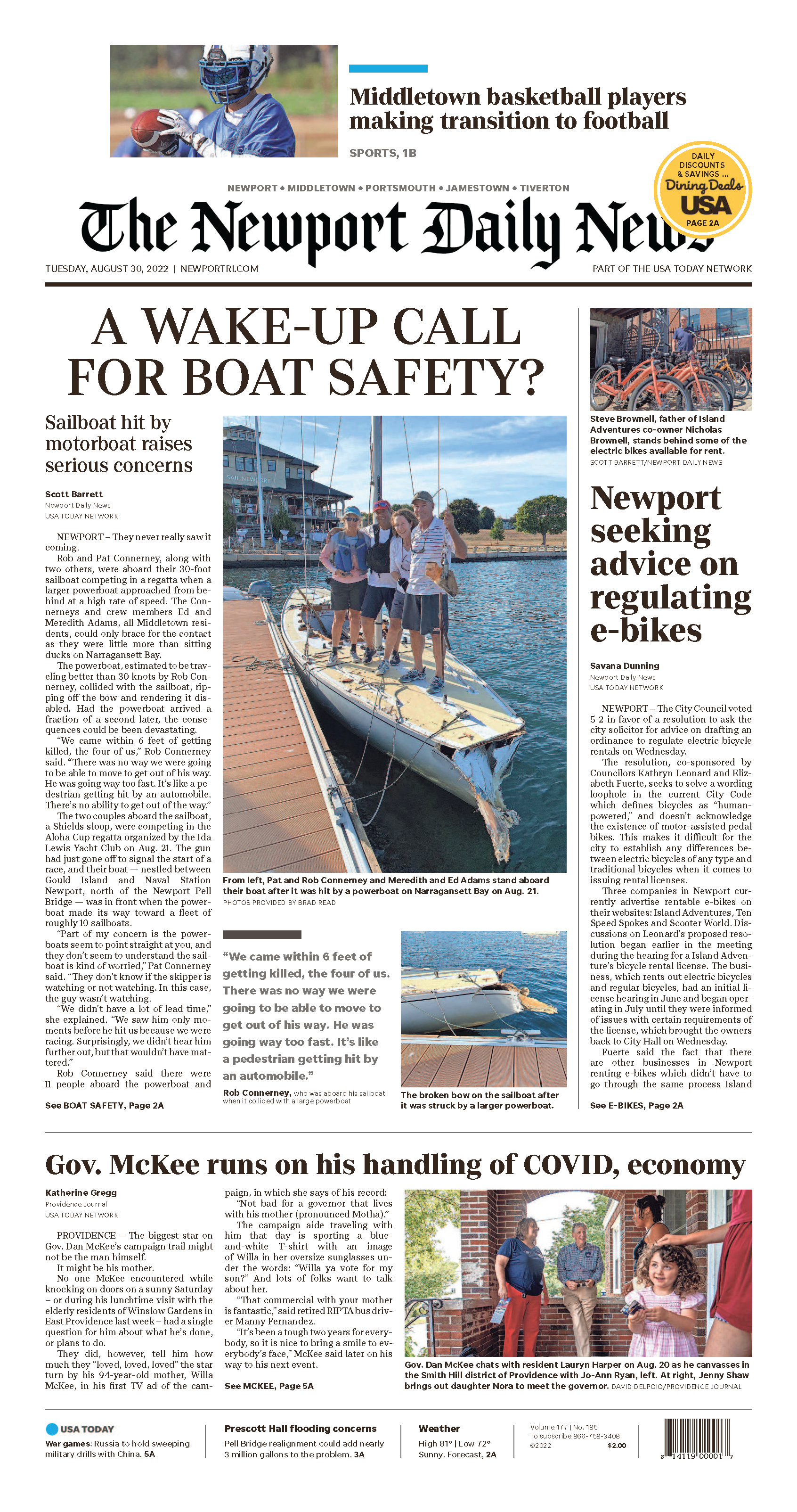[vc_row][vc_column icons_position=”left”][vc_column_text]
View “Gowrie Group – Marine Safety Report Important Marine Safety Changes & Requirements” here
[/vc_column_text][vc_empty_space alter_height=”medium” hide_on_desktop=”” hide_on_notebook=”” hide_on_tablet=”” hide_on_mobile=””][vc_separator][vc_empty_space alter_height=”medium” hide_on_desktop=”” hide_on_notebook=”” hide_on_tablet=”” hide_on_mobile=””][vc_column_text]
Gowrie Group – Marine Safety Report
Important Marine Safety Changes & Requirements
The week leading up to Memorial Day Weekend is the 2022 National Safe Boating Week. Safe Boating Week is an annual campaign to drive global awareness about boating responsibilities and safe boating measures. The Gowrie Group marine team has put together an overview of the most important new regulations and safety topics to help boat owners prepare for a safe and fun 2022 season on the water.
Engine Cutoff Switches & NEW Usage Requirements. As of April 1, 2021, a new federal regulation went into effect that requires the operator of a boat with an installed Engine Cut-Off Switch (ECOS) to use the ECOS link. The law applies on all “Navigable Waters of the US” and to any motorized boat less than 26 feet in length with 3 or more horsepower. The main exceptions are if the main helm station is within an enclosed cabin, if the vessel is not required to have an ECOS by state boating law, and when the boat is traveling at slow harbor speeds or docking. An engine cut-off switch (ECOS) works by cutting power to the engine when the captain goes overboard. The primary options are a wireless system, or a classic lanyard as pictured here. Many marine retailers sell classic lanyards that have multiple clip types so that they can work on most any vessel. Learn more about Engine Cutoff Switches.
Wear Your Life Jacket. The most important life jacket safety rule is to wear it! Each year, you should check your life jackets to ensure they float, have no rips or tears, and fit well. Most new 2022 life jackets have improved labeling. The icons on the new labels indicate performance level, turnability, important warnings, and also U.S. Coast Guard approval. These icons help users select and wear the right life jacket based on the intended water and boating activity. Learn more about the new life jacket labels.
Fire Extinguisher Expiration Dates & NEW Requirements. Beginning April 20, 2022, new U.S. Coast Guard regulations change the extinguisher expiration dates and the minimum classification of fire extinguishers to be carried aboard newer boats. The new regulation puts a 12-year expiration on all disposable (non-rechargeable) fire extinguishers. A boater should look for the manufacture date on the bottom of the fire extinguisher container or near the URL label. It may appear as two or four digits (e.g., 08 or 2008). The 12-year expiration date puts the U.S. Coast Guard regulations in line with the National Fire Protection Association’s recommendations. The U.S. Coast Guard also sets the requirements for number and type of fire extinguishers required on each boat/yacht.
- Learn more about the new 2022 U.S. Coast Guard regulation.
- Learn more about USCG Fire Extinguisher Requirements.
Consider Electronic Visual Distress Signals (eVDSD). The U.S. Coast Guard requires vessels over 16 feet length with mechanical power to carry readily accessible, serviceable visual distress signals (VDS) on board for both daytime and nighttime uses. To help solve the problem of expired pyrotechnic flares, newer electronic visual distress signals (eVDSD) fit in a rod holder and flashes
a continuous SOS for hours. However, it is only approved for nighttime use only, so boats must also carry an orange distress flag or other approved daytime signal for the eVDSD light to be U.S. Coast Guard compliant. Learn more about marine distress signals.
Review Your Insurance Policies & Coverage. Before your spring launch, double check that the lay-up dates and cruising area (navigation area) in your insurance policy align with your boating plans for the season. If you have any questions about your boat insurance coverage, reach out to the marine experts at Gowrie Group at boats@gowrie.com.
Boating Equipment Requirements & Safety Regulations. The U.S. Coast Guard (USCG) and each state provide regulations for boating safety. The USCG sets minimum safety equipment requirements for boats, based on a boat’s length. The USCG provides several helpful resources, including a mobile app, for conducting a self-inspection and equipment review. The National Association of State Boating Law Administrators (NASBLA) summarize boating laws for each state on digital dashboards.
- Download the USCG federal requirements for recreational boats
- Download the USCG Mobile Safe Boating App
- Review the NASBLA Safe Boating Laws by State
- Download 12 Safety Tips for Recreational Boaters
[/vc_column_text][vc_empty_space alter_height=”medium” hide_on_desktop=”” hide_on_notebook=”” hide_on_tablet=”” hide_on_mobile=””][vc_separator][vc_empty_space alter_height=”medium” hide_on_desktop=”” hide_on_notebook=”” hide_on_tablet=”” hide_on_mobile=””][vc_column_text]Gowrie Group | Division of Risk Strategies. As one of the nation’s top insurance agencies in the US, Gowrie Group provides total risk management services to individuals and organizations with complex insurance needs. Gowrie Group offers comprehensive insurance solutions matched with trusted advice and a commitment to service excellence. Gowrie Group’s portfolio of insurance offerings include solutions for businesses, marine entities, home & auto, boats & yachts, and equine interests, as well as employee benefits solutions and safety services. Gowrie Group is a division of Risk Strategies. For more information: www.gowrie.com, info@gowrie.com, or 800.262.8911.[/vc_column_text][/vc_column][/vc_row]



